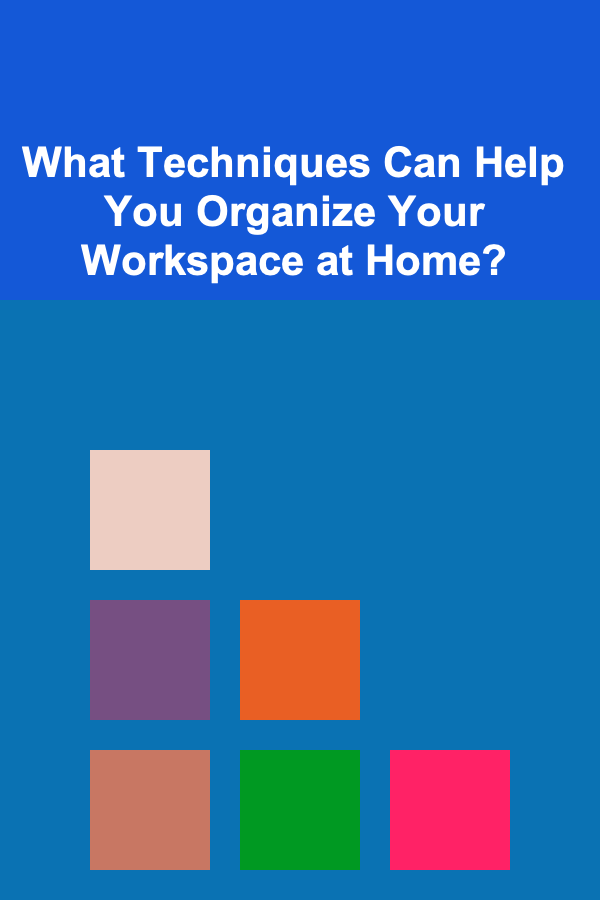
How to Use Blockchain for Cloud Computing
ebook include PDF & Audio bundle (Micro Guide)
$12.99$7.99
Limited Time Offer! Order within the next:

Cloud computing and blockchain technology are two of the most significant innovations in the technological world today. While cloud computing has transformed the way businesses and individuals manage and store data, blockchain technology has revolutionized concepts of security, transparency, and decentralization. The convergence of these two technologies has the potential to address several inherent challenges in cloud computing and bring about new possibilities for businesses across various industries.
In this article, we will explore how blockchain can be integrated into cloud computing, how the two can work together, and the potential advantages and challenges of using blockchain for cloud computing.
Introduction to Cloud Computing and Blockchain Technology
Cloud Computing
Cloud computing refers to the delivery of computing services such as servers, storage, databases, networking, software, and analytics over the internet, also known as "the cloud." It allows businesses and individuals to access and use these services without the need to own and maintain physical infrastructure. The cloud is often divided into three types:
- Infrastructure as a Service (IaaS): Provides virtualized computing resources over the internet.
- Platform as a Service (PaaS): Offers hardware and software tools over the internet, primarily for application development.
- Software as a Service (SaaS): Delivers software applications over the internet, on a subscription basis.
The primary benefits of cloud computing include cost efficiency, scalability, accessibility, and flexibility. However, traditional cloud computing models have been criticized for their reliance on central authority, lack of transparency, and security vulnerabilities.
Blockchain Technology
Blockchain is a distributed ledger technology that ensures the secure, transparent, and decentralized management of data. It allows data to be stored in blocks, which are linked together in a chain, making it difficult for any single entity to tamper with the data. Each block in the chain contains a record of transactions that is cryptographically secure, making it immutable.
Blockchain has been widely recognized for its role in cryptocurrencies like Bitcoin and Ethereum, but its use cases extend far beyond digital currencies. Blockchain has applications in various industries, including supply chain management, finance, healthcare, and now, cloud computing.
The Intersection of Blockchain and Cloud Computing
At first glance, cloud computing and blockchain may appear to be distinct technologies with different goals. However, when combined, they can create a powerful synergy that enhances the efficiency, security, and decentralization of cloud services.
Key Areas Where Blockchain Can Enhance Cloud Computing
-
Decentralization: Traditional cloud computing platforms are centralized, meaning all data and services are controlled by a single entity (such as Amazon Web Services, Microsoft Azure, or Google Cloud). This centralization can lead to concerns over data privacy, security, and reliance on a single point of failure. Blockchain's decentralized nature can address these issues by distributing the control and storage of data across a network of nodes.
-
Data Security and Privacy: Blockchain's cryptographic protocols ensure that data is securely stored and transmitted, making it nearly impossible for hackers to alter the information once it's been recorded. In a blockchain-based cloud system, sensitive data can be encrypted and stored across multiple nodes, reducing the risk of unauthorized access or data breaches.
-
Transparency and Auditing: One of the key advantages of blockchain is its ability to provide transparent and immutable records. In cloud computing, this can enable better auditing and accountability. Every transaction or data interaction can be traced back through the blockchain, providing a clear history of actions taken on the system.
-
Smart Contracts for Automation: Smart contracts are self-executing contracts with the terms of the agreement directly written into code. These contracts automatically execute transactions once predefined conditions are met. Integrating blockchain with cloud computing allows for the automation of workflows, reducing the need for intermediaries and improving efficiency in processes like billing, access management, and resource allocation.
-
Cost Reduction: By removing the need for intermediaries and central authorities, blockchain can reduce operational costs in cloud services. Additionally, blockchain's decentralized model can create peer-to-peer cloud computing networks that eliminate the need for expensive data centers.
Blockchain as a Service (BaaS)
Blockchain as a Service (BaaS) is a model similar to SaaS, IaaS, and PaaS, but with blockchain functionality. In the context of cloud computing, BaaS allows businesses to build and host blockchain applications on the cloud, without the need to set up and maintain their own blockchain infrastructure. Leading cloud service providers such as Microsoft Azure, IBM, and Amazon Web Services (AWS) offer BaaS platforms that make it easier for businesses to leverage blockchain technology without having to become experts in blockchain development.
How to Integrate Blockchain into Cloud Computing
Step 1: Assessing the Need for Blockchain Integration
Before integrating blockchain into a cloud computing platform, it is essential to evaluate the specific challenges or opportunities that blockchain can address. Some questions to consider include:
- Are there concerns regarding data privacy and security that need to be addressed?
- Is there a need for increased transparency and traceability in data management?
- Are there inefficiencies or high costs in current cloud operations that could be improved through decentralization or automation?
By identifying the specific pain points, businesses can develop a tailored approach to integrating blockchain into their cloud infrastructure.
Step 2: Choosing the Right Blockchain Platform
Several blockchain platforms are available, each with its own strengths and use cases. Some of the most popular blockchain platforms for cloud integration include:
- Ethereum: A widely used blockchain platform that supports smart contracts and decentralized applications (dApps). Ethereum's ability to run complex contracts makes it an ideal choice for cloud-based services that require automation.
- Hyperledger Fabric: A permissioned blockchain framework designed for enterprise solutions. Hyperledger Fabric is often used for supply chain management, finance, and healthcare applications that require a private, trusted network of participants.
- Corda: A blockchain platform developed by R3 specifically for financial institutions and regulated industries. Corda allows businesses to create smart contracts while maintaining data privacy.
- EOS: Known for its scalability and speed, EOS is often used for dApps that require high transaction throughput, making it an excellent option for cloud services requiring large-scale transaction processing.
Step 3: Designing the Blockchain Architecture
Once a blockchain platform is chosen, businesses need to design the architecture that will support the integration of blockchain into their cloud services. This involves deciding whether to create a private or public blockchain, how data will be stored and shared across nodes, and how blockchain will interact with existing cloud infrastructure.
For instance, businesses can integrate blockchain to verify cloud resource access, automate payment processes, or use smart contracts for cloud storage agreements. Ensuring seamless communication between blockchain nodes and cloud services is crucial for smooth operation.
Step 4: Implementing Smart Contracts
Smart contracts are one of the key features that make blockchain an attractive solution for cloud computing. These contracts can be used to automate tasks such as resource allocation, payment processing, and compliance checks. By automating these processes, businesses can reduce the potential for human error, eliminate intermediaries, and speed up workflows.
For example, a smart contract could be used to automatically release payment once a cloud service provider fulfills their service agreement, ensuring both parties are protected and that the terms are automatically enforced.
Step 5: Ensuring Security and Compliance
Blockchain technology inherently provides a high level of security, but businesses must still implement security best practices when integrating blockchain into their cloud infrastructure. This includes ensuring the encryption of data, managing private keys effectively, and verifying that all smart contracts are securely coded to prevent vulnerabilities.
Additionally, compliance with legal and regulatory requirements is a major concern, especially in industries like healthcare and finance. Blockchain can enhance compliance by creating an immutable audit trail for all transactions, but businesses must ensure they understand the regulatory frameworks applicable to their industry.
Advantages of Using Blockchain for Cloud Computing
1. Enhanced Data Security
Blockchain's encryption and decentralized nature ensure that data stored in the cloud is much more secure than in traditional centralized systems. With data distributed across multiple nodes, it becomes extremely difficult for hackers to gain access to or alter the information. This provides peace of mind to businesses handling sensitive data such as financial records or personal health information.
2. Improved Transparency and Trust
Blockchain's ability to create a transparent, immutable ledger helps businesses build trust with their customers. Transactions and data interactions can be traced back to their origin, providing a clear audit trail. This transparency is especially valuable in industries such as healthcare, where patients and providers need to trust that data is accurate and secure.
3. Lower Operational Costs
Blockchain can reduce operational costs by eliminating the need for intermediaries, reducing transaction fees, and allowing for more efficient resource allocation. Additionally, by decentralizing cloud infrastructure, businesses can reduce their reliance on expensive data centers and improve resource utilization.
4. Greater Efficiency and Automation
With blockchain-based smart contracts, businesses can automate a wide range of processes, from payment processing to access management. This reduces the need for manual intervention, speeds up transactions, and minimizes human error.
5. Decentralized Cloud Computing
The integration of blockchain allows for the creation of decentralized cloud computing platforms. Instead of relying on large, centralized cloud providers, businesses can create peer-to-peer networks where resources are shared across a distributed network. This reduces the risk of a single point of failure and ensures more equitable access to cloud resources.
Challenges of Using Blockchain for Cloud Computing
1. Scalability Issues
While blockchain technology offers many benefits, scalability remains a challenge. Public blockchains, in particular, can be slow and inefficient, particularly when dealing with a large number of transactions. This can impact the performance of cloud-based services, especially in applications that require high transaction throughput.
2. Integration Complexity
Integrating blockchain into existing cloud infrastructure can be complex. It requires businesses to adopt new technologies and workflows, train staff, and possibly restructure their entire IT ecosystem. This can be a significant barrier for businesses that are already invested in traditional cloud platforms.
3. Legal and Regulatory Concerns
The use of blockchain in cloud computing may face legal and regulatory hurdles, especially in industries with strict compliance requirements. Governments and regulatory bodies have yet to catch up to the rapid pace of blockchain adoption, and businesses may encounter legal challenges regarding data privacy, intellectual property, and transaction verification.
4. Energy Consumption
Blockchain networks, particularly those that use proof-of-work consensus mechanisms like Bitcoin, are known for their high energy consumption. While alternative consensus mechanisms like proof-of-stake are being developed to reduce energy use, the environmental impact of large-scale blockchain networks remains a concern.
Conclusion
The integration of blockchain technology into cloud computing holds immense potential to revolutionize the way businesses store, manage, and secure their data. By leveraging blockchain's decentralization, security, and transparency features, companies can enhance the efficiency and cost-effectiveness of their cloud services. However, the challenges of scalability, integration, and legal compliance must be carefully considered.
As both blockchain and cloud computing continue to evolve, the opportunities for innovation and disruption in industries ranging from finance to healthcare will only continue to grow. For businesses willing to embrace these technologies, the future of cloud computing could be vastly more secure, transparent, and efficient than ever before.

How to Keep Loose Papers Under Control with Folders
Read More
How to Organize Your Child's Playroom for Fun and Function
Read More
What Techniques Can Help You Organize Your Workspace at Home?
Read More
How To Master 3D Printing for Prosthetics and Orthotics
Read More
How To Grasp the Concept of Beauty
Read More
Boosting Your Confidence: A Step-by-Step Journey
Read MoreOther Products

How to Keep Loose Papers Under Control with Folders
Read More
How to Organize Your Child's Playroom for Fun and Function
Read More
What Techniques Can Help You Organize Your Workspace at Home?
Read More
How To Master 3D Printing for Prosthetics and Orthotics
Read More
How To Grasp the Concept of Beauty
Read More